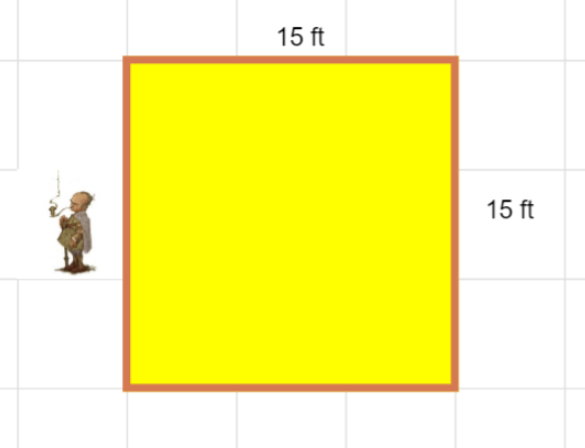Spell Area of Effects
This article brought to you by the spell Thunderwave. An ability three of you have, and apparently none of us know how to use. -DM ZackSo as the above blurb suggests, this article's creation was spurred by yet another situation where Thunderwave's area of effect was called into question. Again. And so I thought "Hey, let me find some decent resource for spell impact areas and make an article for everyone's quick reference!" And what do you know? Turns out I was wrong about Thunderwave! But so was everyone else! Wording of the shapes, which I'll pull from the 5th Edition System Reference Document/Player's Handbook (SRD/PFD), is EXTREMELY important, and I'll include visual diagrams where I can.
The Core Spell Shapes
There are 5 shapes that spells traditionally will take, as indicated in their descriptions. A cone, cube, cylinder, line, or sphere.A Cone:
A cone extends in a direction you choose from its point of origin. A cone’s width at a given point along its length is equal to that point’s distance from the point of origin. A cone’s area of effect specifies its maximum length. A cone’s point of origin is not included in the cone’s area of effect, unless you decide otherwise. -SRDSo up front, Cones and grids don't mix. Depending on the direction you're trying to cast it, we'll likely have to wing it in terms of what grid tiles are hit. The defining factors are the "point of origin", which for most spells is either yourself, or the primary target. "width at a given length is equal to the point's distance from the point of origin" is the other defining piece, and it's a huge pain to use that when freedrawing shapes. Especially when a diagonal space is somehow 5 feet, when horizontal and vertical spaces are too. So instead of trying to draw the damn thing out, it's usually good enough to confirm that what you want to hit, and if you can. But if I had to draw it out, it'd look something like this... And again, that's only the grid pattern if directed straight to the right. We'll handle these as they come.
A Cube:
You select a cube’s point of origin, which lies anywhere on a face of the cubic effect. The cube’s size is expressed as the length of each side. A cube’s point of origin is not included in the cube’s area of effect, unless you decide otherwise. -SRDHere's where I dun goofed. We read in Thunderwave that you are the point of origin, and that it's a 15 foot cube, but we assumed that the point of origin was at the center, when in fact it should be on a SIDE. It doesn't even have to be CENTERED on a side. Being rectangular in nature, this obviously fits much nicer on a grid, but recognize that the caster does not need to be at the center of the side the spell originates from. And you have the CHOICE of offsetting the effect by one square to include yourself in it, should you want to. Which is a little confusing, but we'll cross that bridge if we need to.
A Cylinder:
A cylinder’s point of origin is the center of a circle of a particular radius, as given in the spell description. The circle must either be on the ground or at the height of the spell effect. The energy in a cylinder expands in straight lines from the point of origin to the perimeter of the circle, forming the base of the cylinder. The spell’s effect then shoots up from the base or down from the top, to a distance equal to the height of the cylinder. A cylinder’s point of origin is included in the cylinder’s area of effect. -SRDI'm not going to bother with images here on out, I think we have the right idea by now. I think the only thing to really keep in mind here (especially given our party's.... vertical capabilities), is that the spell dictates a height of the cylinder, and has to be formed from the top or bottom. This means you have to be within casting range of one of those two sections, and cannot cast it from the middle. However, if you're 60 feet up in the air, and can cast a 40 foot cylinder, you don't have to fly down to the ground to do it.
A Line:
A line extends from its point of origin in a straight path up to its length and covers an area defined by its width. A line’s point of origin is not included in the line’s area of effect, unless you decide otherwise. -SRDThe only thing to really note here is a straight path from the origin, which is usually the center of the caster's space, and that you can include the point of origin if you so desire. Why you would want to put your hand in front of your own gun as you pull the trigger is beyond me, but I wouldn't be surprised if there are some scenarios it could help.
A Sphere:
You select a sphere’s point of origin, and the sphere extends outward from that point. The sphere’s size is expressed as a radius in feet that extends from the point. A sphere’s point of origin is included in the sphere’s area of effect. -SRDAbout as basic as it gets. I think I've already had to break out Pythagoras' math for this, and I'm sure that won't change. This is the sort of scenario, where the point of origin is the caster, that I had been mistakenly applying to Thunderwave.
Remove these ads. Join the Worldbuilders Guild





Comments